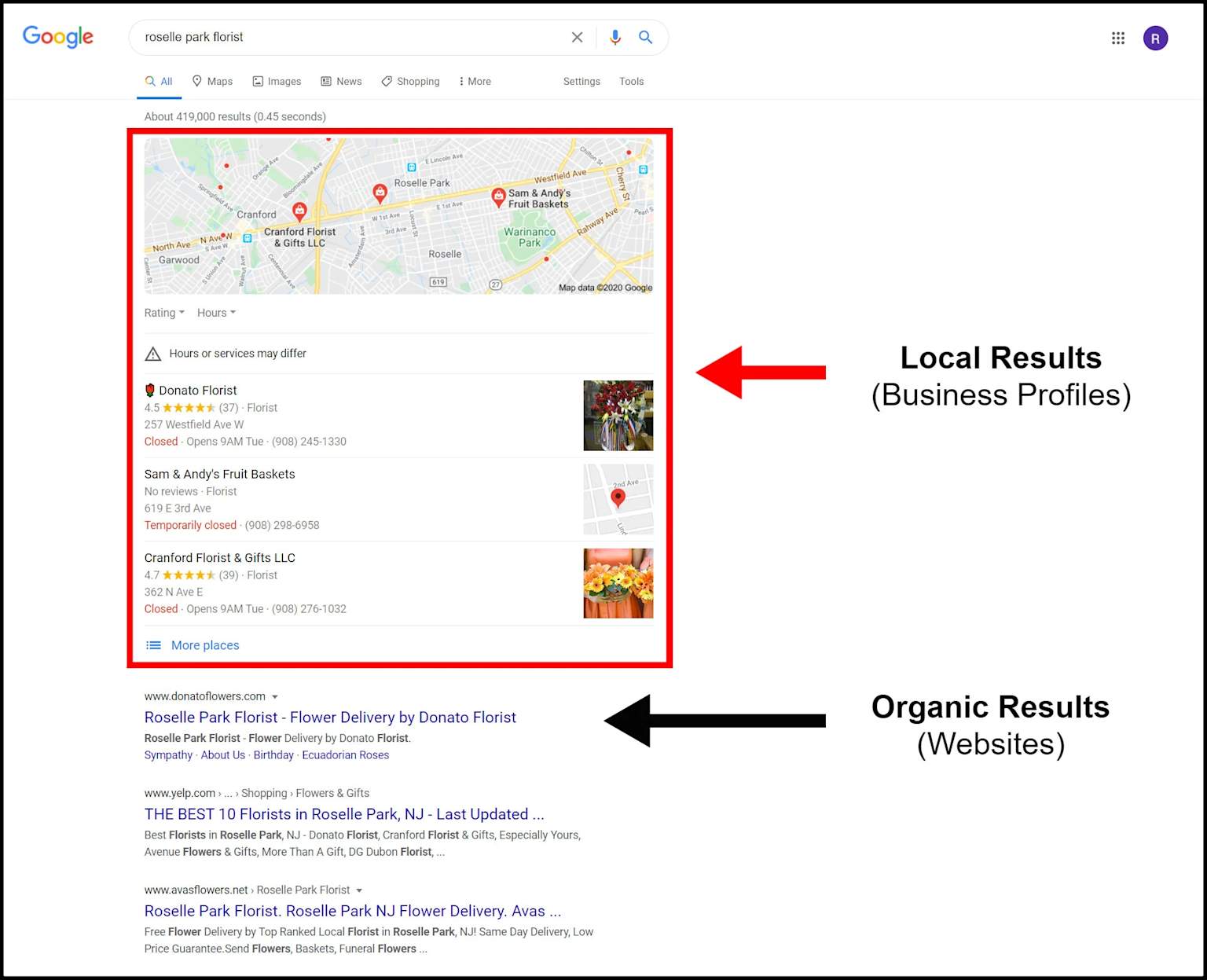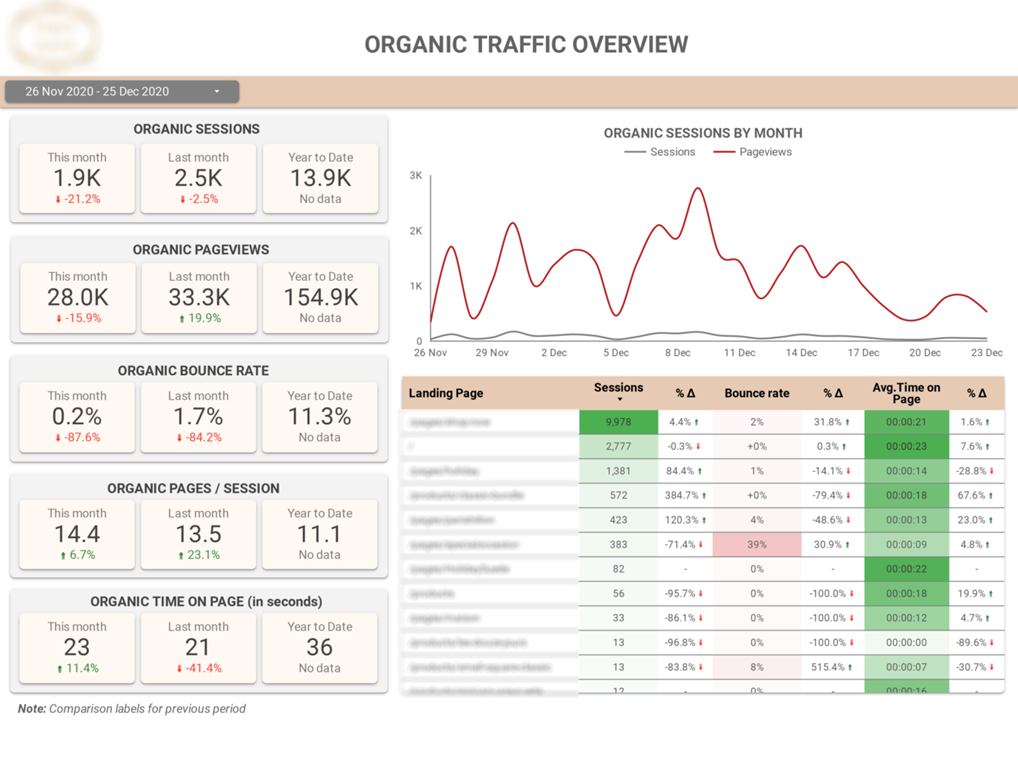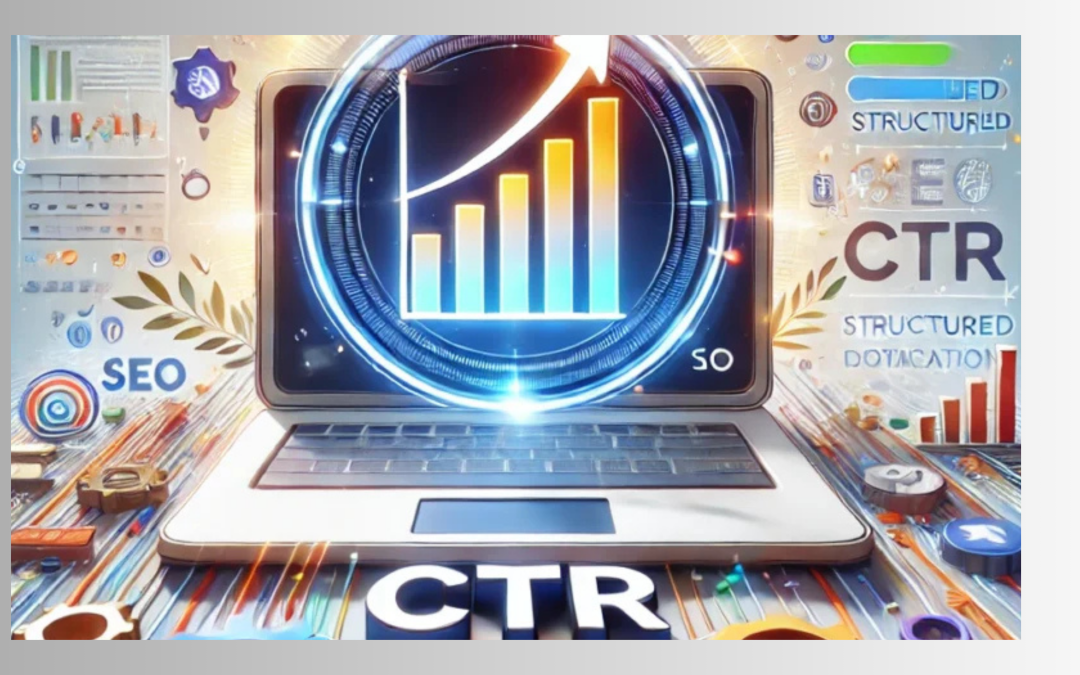CTR manipulation has become one of the most controversial topics in the SEO community, with practitioners split between those who see it as a quick ranking boost and others who warn of its devastating consequences. Based on real experiences from industry experts and recent case studies, this comprehensive guide reveals why CTR manipulation might seem attractive but ultimately poses serious threats to your online presence.
Google search results page highlighting click-through rates by position, showing much higher CTR for top organic results versus ads
What Is CTR Manipulation and How Does It Actually Work?
Click-through rate manipulation refers to artificially inflating the number of clicks your website or Google Business Profile receives from search engine results pages (SERPs). The underlying theory suggests that search engines like Google use CTR as a ranking signal – if more people click on your result, it must be more relevant and valuable.
The Mechanics Behind CTR Manipulation
CTR manipulation typically involves several methods:
- Automated bots that simulate human clicks on search results
- Click farms using real people to manually click on targeted listings
- Microworker platforms where individuals are paid small amounts to click specific links
- Social media campaigns designed to drive artificial clicks
The process usually follows this pattern: manipulators search for specific keywords, locate the target result, click on it, and spend time on the page to simulate genuine user engagement.
SEO dashboard showing key metrics like impressions, CTR, backlinks, organic search traffic, sessions, page performance, and conversion funnel for SEO analysis
A Real SEO Expert’s Experience
CTR manipulation initially delivered promising results – Google Business Profiles began ranking higher for nearly all targeted keywords within just a few weeks. However, this success came with a hidden cost: complete dependency on continued manipulation.
The expert discovered that once you start CTR manipulation, you become trapped in an endless cycle. To maintain the artificial ranking boost, they had to continuously increase search volume, sometimes requiring 20-30 extra searches per day to sustain the illusion.
The Inevitable Crash
The most alarming revelation came when attempting to stop the manipulation. Google’s algorithms immediately detected the sudden drop in engagement signals, causing rankings to plummet below their original positions. This creates a scenario where businesses become permanently dependent on artificial manipulation to maintain visibility.

CTR Manipulation Risk Assessment and Consequences Timeline
Recent Case Studies Reveal CTR Manipulation’s True Impact
Rand Fishkin’s Live Experiment (2024)
Sterling Sky and renowned SEO expert Rand Fishkin conducted a live CTR manipulation experiment during a webinar. Viewers searched for “Vietnamese Restaurant Seattle” and clicked on a restaurant buried on page two.
Results were dramatic but short-lived: The restaurant jumped to position #2 almost instantly. However, as the artificial clicks ceased, rankings not only returned to their original position but actually dropped lower than before the experiment.
TechJackie’s Dual Case Studies
Jackie Owen documented two CTR manipulation tests with contrasting approaches:
Case 1 (2021): A local business stuck at position #34 jumped to position #10 within 22 days, briefly reaching #3 before stabilizing around #9-10 after campaign cessation.
Case 2 (2024): Similar tactics applied to a new domain showed quick ranking gains, proving the technique works across different site ages.
However, both cases emphasized a crucial limitation: CTR manipulation provides temporary boosts that require ongoing investment and carry substantial risk.

Google Business Profile performance report showing impressions, searches, clicks, and engagement metrics over time, relevant for analyzing CTR manipulation in local SEO
The Scientific Evidence: Why CTR May Not Be a Direct Ranking Factor
Despite widespread belief in CTR’s ranking influence, Google has never officially confirmed click-through rate as a direct ranking factor. Research from Search Engine Journal concluded: “There is no compelling evidence to support the idea that Google uses CTR as a direct search ranking signal”.
The Correlation vs. Causation Debate
Multiple studies show correlation between higher CTRs and better rankings, but experts warn against confusing correlation with causation. Pages that rank higher naturally receive more clicks, not the other way around.
Larry Kim’s 2016 study of over 1,000 AdWords accounts found pages with above-average CTRs tended to rise in rankings over time. However, this could indicate that Google rewards pages that satisfy user intent, rather than responding to CTR manipulation specifically.
LSI Keywords and Semantic Variations for CTR Manipulation
Understanding the broader terminology around CTR manipulation helps create comprehensive content that addresses user search intent:
Primary LSI Keywords:
- Click-through rate optimization
- Search engine manipulation
- Organic CTR improvement
- SERP click manipulation
- Google ranking manipulation
Semantic Variations:
- User engagement signals
- Click fraud detection
- Search behavior manipulation
- Artificial traffic generation
- Black hat SEO techniques

Click-through rates for Google featured snippets compared to average results by ranking position, showing higher CTR for featured snippets especially in the top positions
The Serious Risks and Penalties of CTR Manipulation
Google’s Sophisticated Detection Methods
Google’s algorithms have evolved to detect unnatural click patterns with increasing accuracy. The search giant monitors several indicators:
- Geographic clustering of clicks from unlikely locations
- Unnatural bounce rates and short dwell times
- Repetitive click patterns from similar IP ranges
- Mismatched user behavior that doesn’t align with typical search patterns
Escalating Penalty Structure
CTR manipulation violations can result in increasingly severe consequences:
Level 1: Ranking Drops
- Gradual decline in search positions
- Loss of featured snippet opportunities
- Reduced organic visibility
Level 2: Traffic Penalties
- Significant decrease in organic traffic
- Algorithm adjustments targeting the site
- Increased scrutiny on all ranking signals
Level 3: Profile/Account Suspension
- Google Business Profile suspension
- Loss of local search visibility
- Restricted advertising account access
Level 4: Complete Deindexing
- Total removal from Google’s search index
- Loss of all organic search traffic
- Potential permanent blacklisting
Industry Expert Perspectives on CTR Manipulation
The Professional Divide
The SEO community remains split on CTR manipulation, with clear camps emerging:
Skeptics and Warning Voices: Many established SEO professionals strongly advise against CTR manipulation. 100% agree with this which is why I don’t partake in such activities. It could be good alternative to PPC though for a high ticket niche imo.
Cautious Experimenters: Some practitioners acknowledge short-term benefits while warning of long-term risks. CTR manipulation may show results for a few months, but it doesn’t last. This tactic lacks the depth of true local SEO expertise, and there’s a big difference between proven strategies and empty talk.
Ethical Concerns: A third perspective highlights the broader industry impact. It’s a frustrating situation where widespread cheating goes unchecked, and those who try to stay honest risk falling behind simply because others are exploiting the system.

Google search showing local business profiles (Local Results) versus traditional organic website results for “roselle park florist.”
Recent Industry Developments (2025)
LinkedIn SEO expert Nedim Sabic recently announced what appears to be Google’s enhanced crackdown on CTR manipulation tools. He noted that most Python-based CTR manipulation solutions stopped working temporarily, suggesting Google implemented JavaScript requirements that many bot tools couldn’t handle.
This development indicates that Google continues advancing its detection capabilities, making CTR manipulation increasingly risky and technically challenging.
White Hat Alternatives: Ethical CTR Improvement Strategies
Organic CTR Optimization Techniques
Rather than risking penalties through manipulation, focus on legitimate strategies that naturally improve click-through rates:
Title Tag Optimization:
- Include primary keywords in compelling titles
- Use emotional triggers and power words
- Keep titles under 60 characters to prevent truncation
- Test different title formats using A/B testing
Meta Description Enhancement:
- Write compelling 140-160 character descriptions
- Include clear calls-to-action
- Address user search intent directly
- Incorporate relevant LSI keywords naturally
Rich Snippet Implementation:
- Add structured data markup for enhanced SERP features
- Optimize for featured snippets through FAQ sections
- Include review schema for star ratings
- Implement breadcrumb navigation schema

Organic traffic overview dashboard displaying key SEO metrics such as sessions, pageviews, bounce rate, and average time on page over one month
Content-Based CTR Improvements
Search Intent Alignment:
- Research and understand user search intent
- Create content that directly answers user queries
- Use “People Also Ask” questions as content inspiration
- Align content format with search intent type
Visual Enhancement Strategies:
- Optimize images for better SERP visibility
- Create eye-catching thumbnails for video content
- Use high-quality visuals that support your message
- Implement proper image alt text and captions
Technical SEO for Better CTR
Page Speed Optimization:
- Improve site loading times to reduce bounce rates
- Optimize for mobile-first indexing
- Implement lazy loading for images
- Use content delivery networks (CDNs)
URL Structure Optimization:
- Create descriptive, keyword-rich URLs
- Keep URLs short and user-friendly
- Use hyphens to separate words in URLs
- Avoid unnecessary parameters and session IDs
Advanced CTR Optimization: Schema Markup and Structured Data
Implementing Strategic Schema Types
- FAQ Schema: Helps secure “People Also Ask” featured snippets
- Review Schema: Displays star ratings in search results
- Organization Schema: Enhances brand visibility with rich snippets
- Local Business Schema: Improves local search result appearance
Leveraging SERP Features for Higher CTR
Featured Snippets Strategy:
- Format content to answer specific questions concisely
- Use numbered lists and bullet points
- Create comprehensive how-to guides
- Optimize for voice search queries
Local Pack Optimization (for local businesses):
- Complete Google Business Profile with accurate information
- Encourage genuine customer reviews
- Post regular updates and offers
- Optimize for local keyword variations

Keyword click-through rates (CTR) for biking-related terms across two months, showing changes and trends useful for SEO CTR optimization analysis
Measuring and Monitoring CTR Performance
Essential CTR Tracking Tools
Google Search Console:
- Monitor organic CTR by query and page
- Track impression and click data
- Identify low-CTR pages for optimization
- Analyze search performance trends
Third-Party Analytics Platforms:
- SEMrush for competitive CTR analysis
- Ahrefs for SERP feature tracking
- Screaming Frog for technical SEO audits
- Google Analytics for user behavior insights
Key Performance Indicators (KPIs)
Primary CTR Metrics:
- Overall organic CTR percentage
- CTR by search query type
- CTR by SERP position
- CTR comparison against industry benchmarks
Secondary Engagement Metrics:
- Bounce rate correlation with CTR
- Dwell time and user engagement
- Conversion rate from organic traffic
- Brand search volume trends
The Business Impact of CTR Manipulation Gone Wrong
Real-World Consequences
Companies that engage in CTR manipulation face several business risks beyond Google penalties:
- Revenue Loss: Sudden ranking drops can eliminate primary traffic sources
- Brand Reputation Damage: Being associated with manipulative practices harms credibility
- Recovery Costs: Fixing penalties requires significant time and financial investment
- Legal Implications: CTR manipulation may violate advertising platform terms of service
Industry-Specific Impacts
- Local Businesses: Google Business Profile manipulation can result in complete loss of local search visibility
- E-commerce Sites: Product listing penalties affect entire catalog visibility
- Service Providers: Professional service rankings impact lead generation and client acquisition
Future of CTR and Search Engine Evolution
Machine Learning and AI Detection
Google’s machine learning algorithms continue evolving to detect artificial engagement patterns. RankBrain and BERT updates have made search engines more sophisticated at understanding genuine user intent versus manipulated signals.
Emerging Ranking Factors
As CTR manipulation becomes more detectable, Google increasingly emphasizes:
- User experience signals (Core Web Vitals)
- Content quality and expertise (E-E-A-T)
- Genuine user engagement metrics
- Brand authority and trust signals
Legal and Ethical Considerations
Terms of Service Violations
CTR manipulation often violates:
- Google’s Webmaster Guidelines
- Google Ads terms of service
- Various platform community standards
Industry Standards and Ethics
Professional SEO associations and industry leaders consistently advocate for white hat practices that focus on genuine user value rather than algorithmic manipulation.
Conclusion: The Verdict on CTR Manipulation
The evidence overwhelmingly demonstrates that CTR manipulation is a high-risk, low-reward strategy that can permanently damage your online presence. While short-term ranking improvements may occur, the long-term consequences far outweigh any temporary benefits.
Key Takeaways
- CTR manipulation creates dependency: Once started, you must continue indefinitely or risk severe ranking drops
- Google’s detection improves constantly: Advanced algorithms make manipulation increasingly difficult and risky
- Penalties are severe and lasting: Recovery from CTR manipulation penalties can take months or years
- White hat alternatives are more effective: Ethical CTR optimization provides sustainable, long-term results
- Professional consensus warns against it: Leading SEO experts consistently advise against CTR manipulation
Recommended Action Plan
Instead of risking CTR manipulation, invest in:
- High-quality content creation that naturally attracts clicks
- Technical SEO improvements that enhance user experience
- Genuine audience building through valuable resources
- Professional SEO consulting for sustainable growth strategies
The path to successful SEO lies not in manipulating search engines, but in creating genuinely valuable experiences that users naturally want to engage with. By focusing on ethical optimization techniques and user-first strategies, you’ll build sustainable organic growth that withstands algorithm updates and provides long-term business value.
Remember: Short-term ranking gains are never worth the risk of permanent penalties. Choose the white hat path and invest in strategies that will serve your business for years to come.
You Can Also Read Here Cyber Security SEO: How to Protect and Rank Your Website Online in 2025




